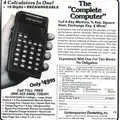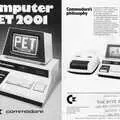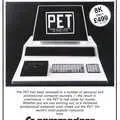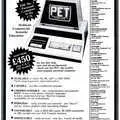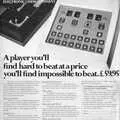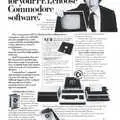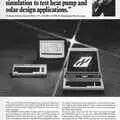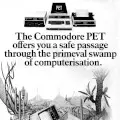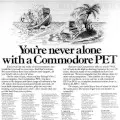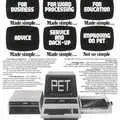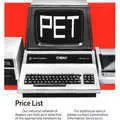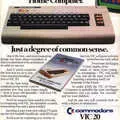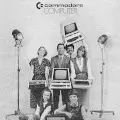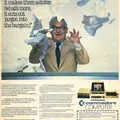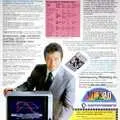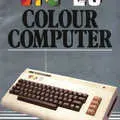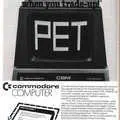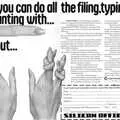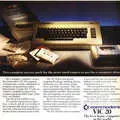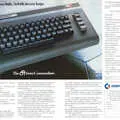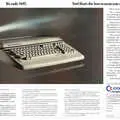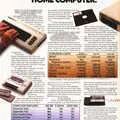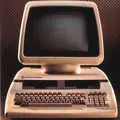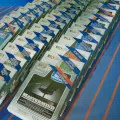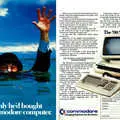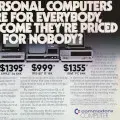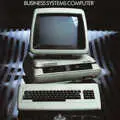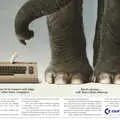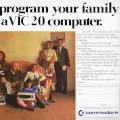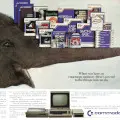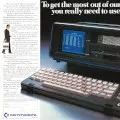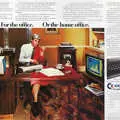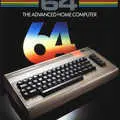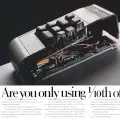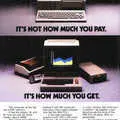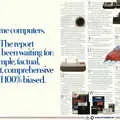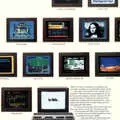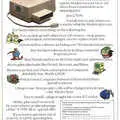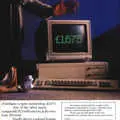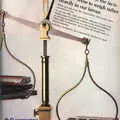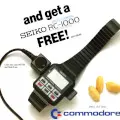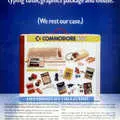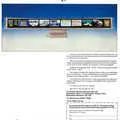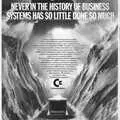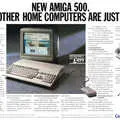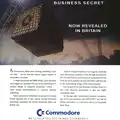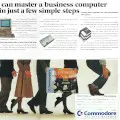
Commodore Advert - November 1977
From Sales Brochure
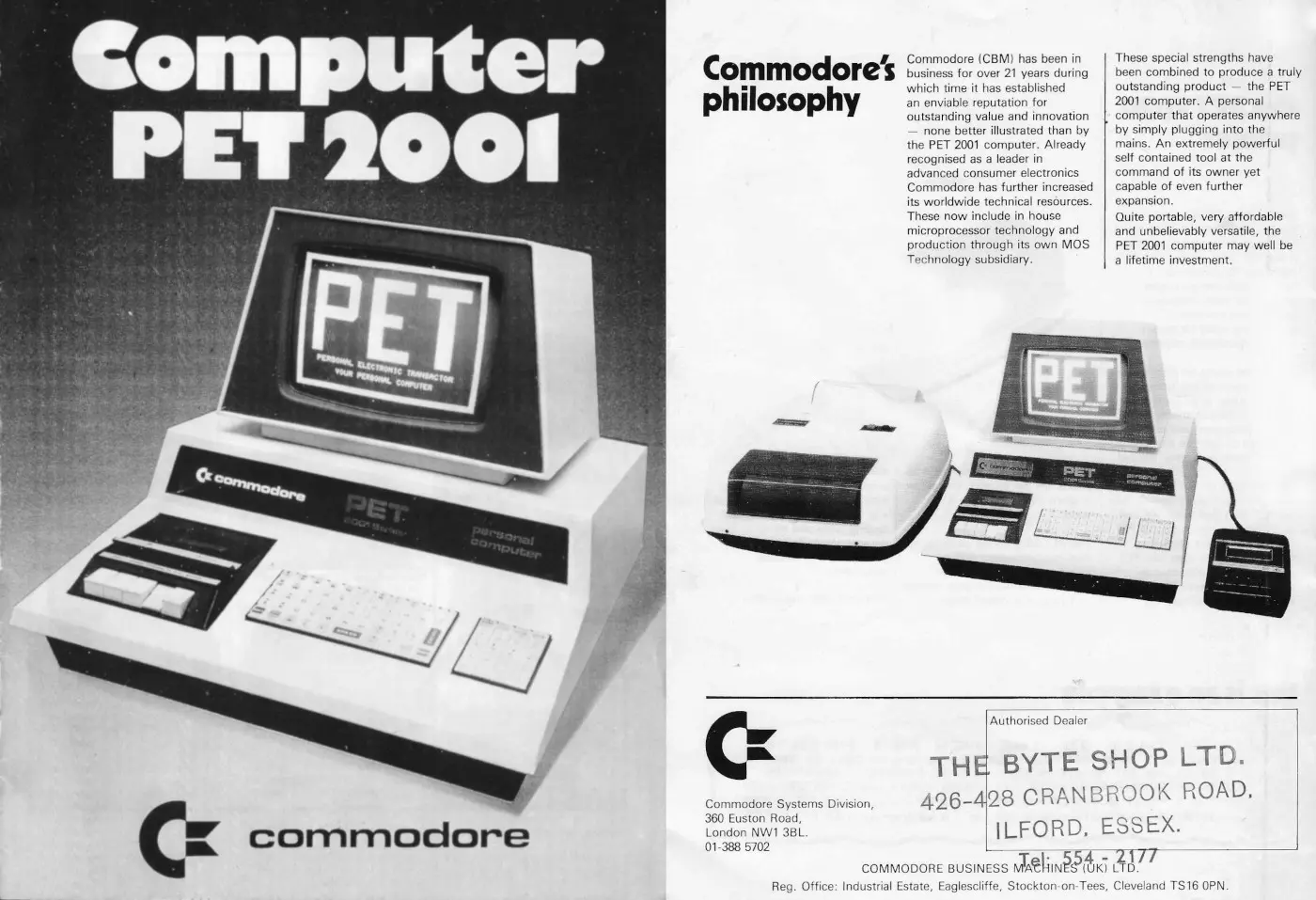
Commodore's philosophy: Computer PET 2001
This is part of an eight-page A5 booklet produced for the launch of the Commodore PET in the UK, a machine which made its debut at the Chicago Consumer Electronics Show in January 1977, months before its contemporaries the TRS-80 and Apple II.
However it didn't start shipping to the public in serious numbers until towards the end of that year, and didn't actually make it to the UK until 1978.
Shown here under its original name of the PET 2001, the machine was based on the 6502 processor and came with either 4K or 8K RAM, which was expandable up to 32K, although later on Commodore took to punching out the expansion sockets so that cheaper models couldn't be bought and upgraded using third-party memory.
Commodore buys MOS Technology
The 6502 processor had been acquired when Commodore had purchased MOS Technology in 1976, in order to protect supplies of the chips it was using in its calculator business - its main source of income at the time.
The aquisition also helped Commodore to better achieve the vertical integration that had enabled Texas Instruments to start selling its own calculators for less than the cost it sold the parts to other companies - a move that kicked off the Calculator Wars of the mid 1970s.
Employees of MOS were given a bonus plan which was tied to the value of Commodore's stock, with payouts calculated by the market value of an imaginary blob of shares. In one year, bonuses to MOS staff worked out at half their yearly salary[1].
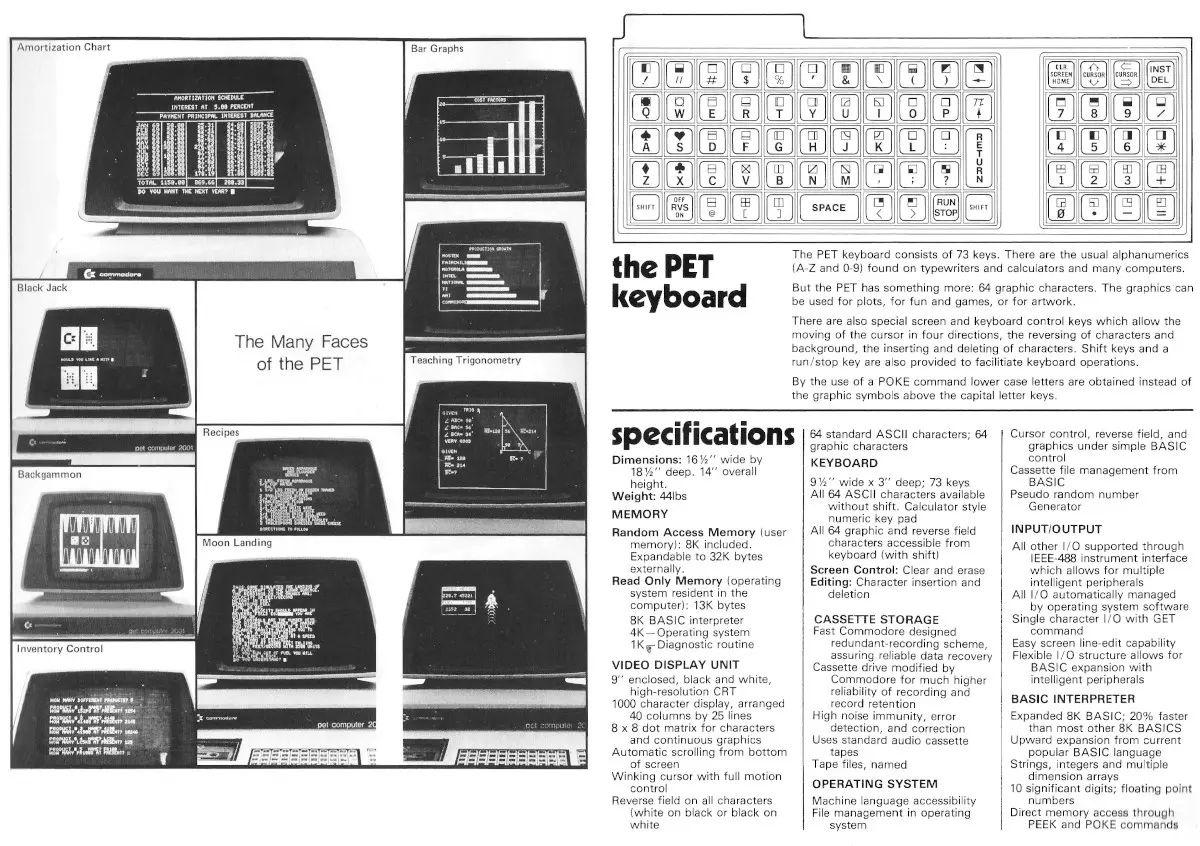
Photos of the prototype PET in action, from the sales leaflet, 1978
The name PET was a made-up backronym of Personal Electronic Transactor - or less charitably Peddle's Ego Trip, after its designer Chuck Peddle - and was influenced by the Pet Rock fad of the mid 1970s created by George C. Coakley[2][3].
The number 2001 was chosen simply because that was familiar to the public via the film 2001 - A Space Odyssey, and so sounded suitably space-age.
The Deal of the Century
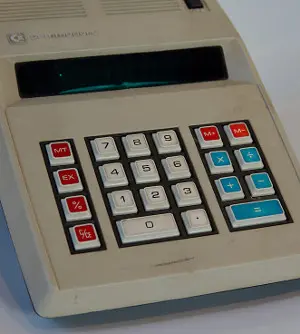
A Commodore US*5M, showing the same sort of keys as used on the original 2001 PET - see belowThere was an 8K ROM present, containing a version of Microsoft BASIC, which had been ported to the 6502 in 1976 and which was becoming something of a standard, along with a 4K operating system, also in ROM.
Commodore had managed to secure a simple one-time payment deal - of $25,000 - for its copy of BASIC, unlike the more common price-per-unit-sold.
It managed to squeeze the most out of its licence by using essentially the same code throughout its entire range, up to but excluding the Amiga, shipping on millions of computers.
It also had rights to modify its copy, which seemed to catch out even Bill Gates, who visited a PET trade stand manned by Leonard Tramiel, son of Commodore founder Jack, in 1977 or '78.
Apparently wanting to impress a group of Japanese business people following him around, he had typed WAIT 6502,10 - a low-level system call - into the PET that Tramiel junior was demonstrating, expecting to see an easter egg that should have displayed "Microsoft!".
Unfortunately for Gates, Microsoft had given Commodore its BASIC in printed form, which was duly typed in to re-create the source code, but parts of it were redacted.
The redacted code was revealed by disassembling the original object code also supplied by Microsoft, where the easter egg was spotted and removed[4]. However, it still exists in the version of the 6502 BASIC which Microsoft open-sourced in September 2025[5].
The early PETs used "chicklet" keys that were essentially left-overs from Commodore's calculators. Although these were arranged in standard QWERTY, their positions were slightly non-standard, with the keyboard being arranged in a strict grid.
The small-sized keyboard did however mean that the PET could also fit in an in-built cassette player for program storage.
It also came with a built-in 9" monitor - the prototypes used a stripped-out Zenith TV tube from a local electronics shop as they were the cheapest available - whereas production models used Amperex tubes, amongst others.
The product photos inside the leaflet showing screenshots of the PET in action also show this early prototype PET, as the monitor housing has smoothly-curved lines - the case was actually made out of wood so curves were fairly easy to do.
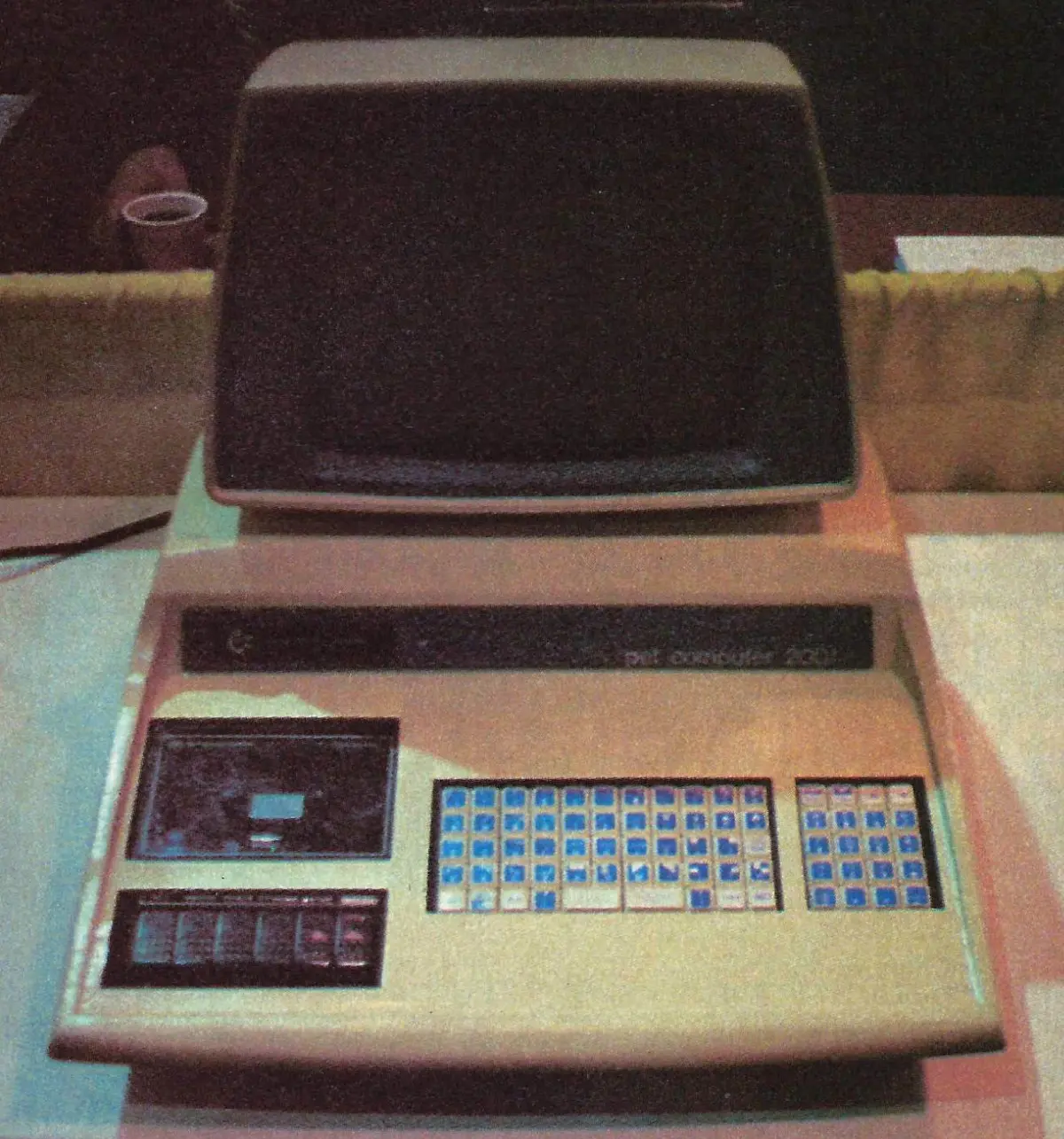
The prototype version of the "Pet Computer 2001" with its futuristic curved wooden case, as shown at the NCC show in Dallas in the summer of 1977. From Byte, October 1977
The production version of the PET had to do away with the futuristic lines of the prototype's case, in favour of a straight-edged metal version, as this was much easier and cheaper to produce.
The metal case was made by Commodore's office furniture division in Ontario - the largest manufacturer of budget metal office furniture in Canada[6].
At launch, the PET 2001 retailed for $595, for the 4K version, and $795 for the 8K - that's about £4,860 in 2025.
The keyboard turned out to be not especially popular[7], and so Commodore released updated versions of the PET the following year which had a proper full-sized keyboard, which required moving the cassette to an outboard unit - the one shown in this leaflet as the "2nd cassette deck".
Meanwhile, first appearances seemed positive, with Byte magazine writing:
"The PET is an excellent example of the true appliance computer: a neat, self-contained graphics-oriented package designed for the mass market as well as for the serious experimenter."
Commodore's Canadian Connection
The reason for Commodore's Canadian connection dated back to Commodore's origins in the 1950s.
Polish national Tramiel - real name Idek (or sometimes Jacek) Trzmiel - had been incarcerated in Auschwitz before ending up at Ahlem labour camp. After being liberated at the end of the war, he relocated to the US.
He joined the US Army and was posted to Fort Dix, where he learnt how to repair the army's office machinery. Using this experience after leaving the army, he opened up a typewriter repair business in New York's Bronx, where he also worked as a part-time taxi driver.
Tramiel then brokered a deal with a Czechoslovakian typewriter business to assemble its typewriters in the US.
However, as Czechoslovakia was part of the Communist Bloc, the components had to be imported indirectly via a new company in Toronto, Canada, called Commodore Business Machines. The name Commodore was chosen to sound somewhat military, with Tramiel explaining:
"Well I was in the army and I wanted to call my company 'General,' but there are so many Generals in the United States – General Electric, General Motors, etc. Then I went to 'Admiral' and that was taken. So I wound up in Berlin and we were in a cab and the cab made a short stop and in front of it was an Opel Commodore [car]. And that was it[8]".
By 1962, Tramiel's company was big enough to float on the Canadian stock exchange, however the 1965 Atlantic Acceptance financing scandal[9] involving Tramiel's first chairman - C. Powell Morgan, who had acquired a small stake in the company - eventually led to Canadian financier Ivring Gould stepping in to buy 17.9% of Commodore in order to save it.
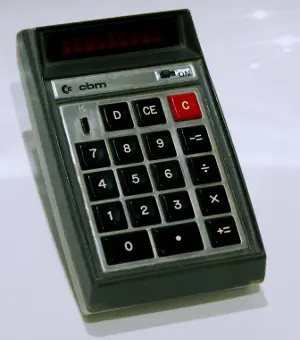
The Commodore C110 - a re-branded Bowmar - launched in 1971Tramiel later visited Japan in order to understand how the Japanese were managing to undercut Commodore's mechanical adding machine business.
It was here that he witnessed the new electronic desk calculators which were about to destroy Commodore's existing business and switched the company over, introducing its first electronic pocket calculator - a re-branded Bowmar - in 1971.
The company became reasonably successful as a calculator manufacturer until Texas Instruments entered the market and started selling its own calculators for less than the cost of the components it was selling to everyone else, including Commodore.
It was this - and the ensuing price war - that led to Commodore purchasing MOS in order to secure a supply of its own chips.
Back in 1976, the purchase of MOS Technology - with the help of a $3 million loan personally guaranteed by Gould[10] - also brought with it Chuck Peddle - a former Motorola employee and co-designer, along with Bill Mensch, of the 6502 processor.
One of the versions of history suggests that it was Peddle who persuaded Commodore's founder Jack Tramiel that calculators were a dead end and that the company should move into computers.
As well as the 6502 processor, MOS was already producing the KIM-1 single-board computer as a demonstrator, and it was this that would become the PET - put in a case with a keyboard, monitor and a bit more memory.
Date created: 04 August 2014
Last updated: 06 November 2025
Hint: use left and right cursor keys to navigate between adverts.
Sources
Text and otherwise-uncredited photos © nosher.net 2025. Dollar/GBP conversions, where used, assume $1.50 to £1. "Now" prices are calculated dynamically using average RPI per year.
